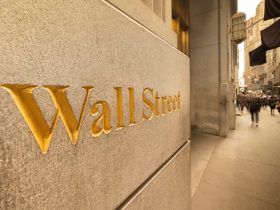Gold has climbed close to $100 an ounce since Hamas attacked Israel more than week ago, but investors shouldn’t expect to see a straight shot higher for prices, even as geopolitical turmoil tends to lift demand for so-called safer investments.
“Investors are fleeing to safe-haven assets during times of geopolitical uncertainty,” said Rania Gule, market analyst at XS.com, in market commentary on Monday. Gold is considered one of these safe assets during “turbulent periods.”
Hamas, the Palestinian militant group that controls the Gaza Strip, launched a surprise attack on Israel on Oct. 7. Israel declared war against Hamas and retaliatory strikes by Israel on Gaza followed.
As the conflict in Palestine escalated last week, market demand “shifted from riskier assets to safe-haven plays,” said Gule.
Gold futures have climbed by nearly $100 an ounce, or 4.8%, since their settlement at $1,845.20 on Oct. 6, just ahead of the Oct. 7 Hamas attack on Israel. Prices for the precious metal rose by more than 3% on Friday alone.
“No one wanted to be out of the gold market going into the weekend. It was a classic safe-haven event,” wrote Brien Lundin, editor of Gold Newsletter, in a note sent to subscribers on Saturday. So the situation is “bad news for the world and, in a typical bittersweet fashion, good news for gold bulls.”
Gold ‘relies on no one’
The rise in gold prices so far is “significant” and is a “reflection of short-term confidence in the markets,” David Russell, chief executive officer of GoldCore, told MarketWatch. Still, this is may be “just a small indication of how it is set to perform in the coming months.”
So far, the Israel-Hamas conflict has been mostly supportive for gold.
“Gold reacts well on the back of uncertainty, and this is a very uncertain situation,” said Russell.
“ “Gold reacts well on the back of uncertainty, and this is a very uncertain situation.” ”
“Any war requires funding and that comes from printing money,” he said. “This is inflationary and therefore positive for gold.”
Read: Israel-Gaza conflict threatens to reawaken U.S. inflation, investors worry
Short-term, Russell said gold traders will always look to the likes of U.S. dollar strength and U.S. Treasury yields, but physical gold buyers recognize that instability in the Middle East will “not be resolved swiftly or easily and so long-term this is going to be a very uncertain time ahead.” Gold is a “certain asset as it relies on no one, and that’s why it will do well against this backdrop.”
Price pullback
Still, fresh record highs appear to be out of the question, despite the recent boost for gold.
On Monday, the most-active December gold contract
GC00,
GCZ23,
settled $7.20, or 0.4%, lower at $1,934.30 an ounce on Comex after posting a more than 5% weekly rise.
The precious metal isn’t likely to see prices climb above $2,000 an ounce for an extended period, or surge to new all-time highs in the short term, said Matthew Miller, senior equity analyst at CFRA Research.
Strength in the U.S. dollar and rising real yields provide investors with “compelling options for safe-haven assets,” he said. The real yield on the 10-year Treasury has moved from negative 1% in March 2022 to positive 2.4% currently, which “increases the opportunity cost of holding a non-interest-bearing security, such as precious metals.”
He said CFRA expects gold to be “rangebound” between $1,800 and $2,000 until the market enters the next phase of interest-rate policy — when the Fed starts cutting rates again. That’s when gold should “experience a new bull market.”
Risks
Gold Newsletter’s Lundin, meanwhile, warned of risks ahead for gold.
“As experienced investors in the sector know well, gold typically spikes on these kinds of geopolitical events, only to fall right back down (or lower) once things calm down,” he wrote in Monday’s note.
However, Lundin told MarketWatch late last week that this geopolitical event may hit the market a bit differently.
The Federal Reserve’s interest rate-hike cycle is “either peaking or has already peaked,” with Fed Chairman Jerome Powell and company likely “happy to have an excuse to lay off further hikes, or even pivot. And this crisis in the Mideast, which is very likely to escalate and expand, could be just the excuse they need.”
So “if this geopolitical event forces a shift in monetary policy, it will provide the fuel to take this rally in the metals far, far higher,” said Lundin.
Read the full article here













Leave a Reply